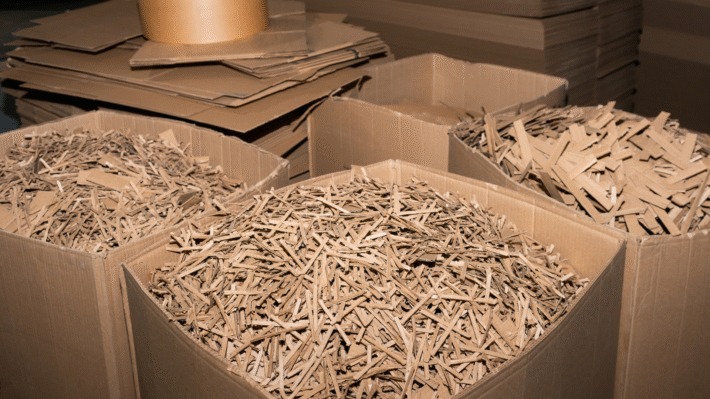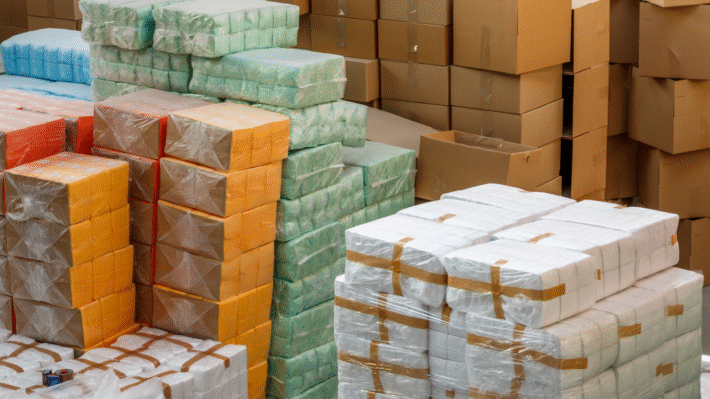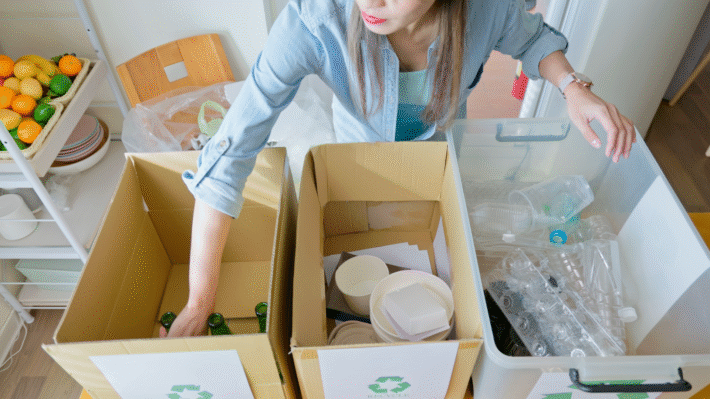Design for Degradation: Sustainable Chemicals That Safely Break Down

Design for Degradation is like nature’s cleanup crew! Imagine a world where chemicals break down into harmless pieces, leaving the environment fresh and clean. This is not just some dream—it’s the future we’re working towards! Our planet needs this kind of thoughtful design more than ever. From reducing pollution to protecting wildlife, design for degradation ensures that what we use today doesn’t harm tomorrow.
Ever wondered how this magic happens? It’s all about creating chemicals that naturally degrade instead of hanging around like an unwelcome guest. Let’s dive into the details of how we can make our chemicals friendly to the Earth. Get ready to explore this fascinating world where science meets nature’s best practices!
Understanding Design for Degradation
Let’s talk about Design for Degradation. This idea helps us make sure that chemicals break down into safe, harmless things after we use them. This stops them from sticking around where they shouldn’t be, like in our soil and water. But why do we need this?
Why Do We Need Design for Degradation?
The Danger of Persistent Chemicals
Persistent chemicals can be really bad news. These are substances that don’t break down easily, and they can stay in the environment for a really long time. They can pollute the air, water, and soil, making not only nature but also our lives very difficult. This is why having chemicals that can degrade safely is super important. If you’d like to know more about the dangers of persistent chemicals, head over to this article.
Protecting Nature and Wildlife
Our planet is home to amazing wildlife and beautiful nature, and persistent chemicals pose a huge threat to them. Fish, birds, and even tiny insects can be harmed by these chemicals. When we switch to using chemicals designed for degradation, we help protect these creatures and maintain the balance of nature. This ensures a healthier world for everyone. To explore more about how chemicals can harm wildlife, visit here.
How Chemicals Degrade Naturally
Chemicals don’t disappear by magic. Mother Nature has her ways of breaking them down.
Natural Processes of Degradation
The natural processes of degradation are like having little helpers. Sunlight, water, and air work together to break chemicals apart. Bacteria and other tiny creatures also play a part. They munch away at chemicals, turning them into harmless materials. It’s like recycling, but done by nature. You can learn about natural degradation processes here.
Factors Affecting Chemical Breakdown
Now, not all chemicals break down at the same speed. Some things can make this process faster or slower. Temperature and moisture make a big difference. For example, chemicals in warm, wet places degrade faster. Also, the structure of the chemical itself can affect how quickly it breaks down. The more we know about these factors, the better we can plan for degradation. For details on what affects chemical breakdown, check this link.
This was a quick look at why we need design for degradation. Stay tuned for more insights on making our world a cleaner and safer place with smart chemistry!
Principles of Design for Degradation
Understanding how to create products and materials that can break down safely is like finding a hidden treasure. It helps the Earth stay healthy and clean. Let’s break down some simple but important principles of designing for degradation.
Key Elements of Effective Design
Good design for degradation is about choosing the right pieces to make the whole. Think of it like building a Lego set where each piece must fit perfectly to create something awesome and safe.
Choosing Biodegradable Materials
Choosing biodegradable materials is the first step. These are materials that nature can break down easily. Imagine if the plastic in your juice box could just vanish after a while, without leaving any harmful stuff behind.
- Plants and Trees: Using materials that come from nature like corn starch or bamboo.
- Smart Plastics: Scientists create new types of plastics that can disappear over time.
- Recycling Like Champions: Even glass and paper can be designed to break down better with a bit of help.
Learn more about these eco-friendly materials here.
Predicting Degradation Pathways
Predicting how materials will degrade is like having a crystal ball to see the future. It’s about knowing what will happen when materials start breaking down.
- Nature’s Magic Tricks: Bacteria, sunlight, and water can help materials break down.
- Time Check: Knowing how long it will take for something to degrade, like a magician counting down for a trick.
- No Bad Surprises: Making sure nothing poisonous comes out when things break down.
For insights into predicting material degradation, visit this link.
Balancing Function and Degradation
Balancing function and degradation is like walking a tightrope. You want the product to last as long as you need it but not a moment too long to harm the planet.
Ensuring Product Efficiency
Ensuring product efficiency is about making sure things work just right. It’s important they do the job before they fade away into nature.
- This and That: The product needs to be durable before degrading, like a sturdy shoe that eventually wears down.
- Practical and Smart: Things like cleaning products that work hard but then vanish into thin air.
- Test and Tweak: Scientists keep testing until they get it just right, like bakers perfecting a cake recipe.
Maintaining Environmental Safety
Maintaining environmental safety means thinking about Mother Earth. Safe products don’t harm plants, animals, or people when they disappear.
- Greener Tomorrow: Always focus on what’s good for Earth while designing anything new.
- Team Up with Nature: Nature becomes a partner, helping to break things down safely.
- Friends and Neighbors: Keeping everyone safe, from tiny bugs to big elephants.
In this balanced approach, we can be cool inventors designing for a safe and happy planet. Let’s create wisely!
For more on keeping our world safe from chemicals, read here.
Applications of Design for Degradation
Let’s dive into how the design for degradation is changing different industries. This means making chemicals that turn into harmless stuff after we use them. It’s like having magic that keeps our planet clean.
Industries Embracing Safe Degradation
Many industries are really into this idea of safe degradation. They’re finding ways to make products that don’t stick around and cause trouble in the environment.
Consumer Products and Packaging
In the world of consumer products and packaging, companies are on a mission. They’re switching to materials that break down naturally. Think about your everyday stuff, like shampoo bottles, snack wrappers, or even your favorite toy’s packaging. Brands now use new kinds of plastics that can break down safely after being used. Want to know more about this? Check out the official site of Biodegradable Products.
Pharmaceuticals and Health Safety
The field of pharmaceuticals is getting safer too. Drug makers are focusing on creating pills and medicines that dissolve completely without harming nature. When you take medicine, it passes through your body and the extra bits that come out should not linger in the environment. It’s crucial for our health and the health of the planet. The FDA’s approach provides further details on how they are managing this change.
Real-world Examples and Success Stories
Many success stories show just how effective this approach can be. Let’s look at some cool examples of people and companies making it work.
Innovations in Chemical Design
Innovations in chemical design are front and center. Some teams have created groundbreaking solutions, like a new kind of washing detergent that breaks down into eco-friendly parts. And this isn’t just talk. Real products are already on store shelves, paving the way for a cleaner environment.
Breaking Down Barriers to Adoption
At first, not everyone was ready to embrace these changes. Breaking down barriers took time but now, more people are on board than ever. Companies that once thought it too costly or difficult to switch are seeing the benefits. By working together, they replaced old materials with new, cutting-edge ones. Learn more about these efforts at Green Chemistry Innovations.
By understanding and applying the principles of design for degradation, we can look forward to a future with less waste and more smiles. Industries across the board are taking note, and every positive step we take helps turn the tide.
Challenges and Future of Design for Degradation
Overcoming Barriers to Implementation
Technical and Financial Constraints
Technical and financial constraints are serious challenges for Design for Degradation. Designing chemicals to break down safely is not easy. It involves complex research and development. Sometimes, creating such products can cost more. But, over time, smart companies can save money. They can reduce waste and avoid environmental clean-ups.
This is a note about technical and financial challenges.
Finding cost-effective ways to make biodegradable materials requires investment. But remember, investing wisely today can save a lot of resources tomorrow. By developing new technologies, companies can cut production costs. Also, these sustainable practices can lead to long-term savings[1].
Regulatory and Policy Support
Regulatory and policy support is vital for promoting Design for Degradation. Government rules can encourage or discourage companies from innovating. Supportive laws can make it easier for businesses to create and use environmentally friendly products.
Governments can offer incentives like tax breaks to companies investing in these greener methods. Strong policies ensure that everyone plays a part in protecting our planet. Visiting this EPA page can offer more insights into current regulations.
The Road Ahead for Sustainable Chemicals
Exploring New Technologies
Exploring new technologies is key to the future of sustainable chemicals. Scientists and engineers are working hard to discover innovative ways to make chemicals degrade safely. They look into nature for answers, trying to mimic natural processes.
Inventors are designing new machines and methods with these goals in mind. Cutting-edge technologies can help create better, safer chemical solutions. The future promises exciting breakthroughs that can change the way we think about chemical design.
Collaborative Efforts for a Greener Future
Collaborative efforts are essential for building a greener future. No one can tackle this mission alone. Companies, governments, and communities need to work together. They can share knowledge, technology, and resources.
Partnerships across different sectors can lead to sustainable solutions. Global cooperation is needed for real, lasting change. By joining forces, we can face these challenges and create a healthier planet for generations to come.



